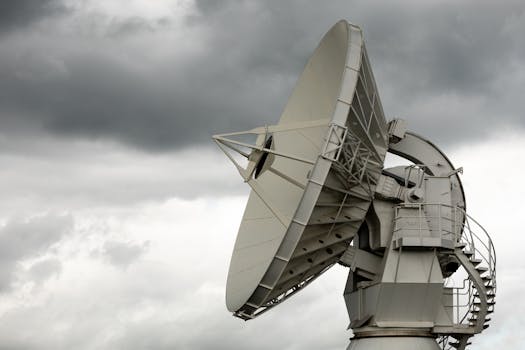
Satellite Development History: Exploring Key Milestones and Innovations
Satellite development history began with the launch of the first artificial satellite, Sputnik 1, by the Soviet Union in 1957. Since then, the field of satellite technology has undergone significant transformations, driven by advances in materials science, propulsion systems, and computer technology. The focus keyword satellite development is crucial in understanding the evolution of space exploration and the impact of satellites on our daily lives. In this article, we will delve into the history of satellite development, highlighting key milestones and innovations that have shaped the industry.
The early years of satellite development were marked by intense competition between the United States and the Soviet Union, with both nations investing heavily in space research and development. The launch of Sputnik 1 was a significant milestone, as it demonstrated the feasibility of launching an artificial satellite into orbit. This was followed by the launch of Explorer 1, the first successful American satellite, which discovered the Van Allen Radiation Belt. The success of these early satellites paved the way for further advancements in satellite technology, including the development of communications satellites, weather satellites, and navigation satellites.
The Golden Age of Satellite Development
The 1960s and 1970s are often referred to as the golden age of satellite development. During this period, significant advancements were made in satellite design, materials, and propulsion systems. The introduction of geosynchronous satellites, which remain stationary above a fixed point on the Earth’s surface, revolutionized the field of satellite communications. The first geosynchronous satellite, Syncom 2, was launched in 1963, and it paved the way for modern communications satellites that enable global telecommunications, television broadcasting, and internet connectivity.
The development of weather satellites also played a crucial role in understanding global weather patterns and predicting storms. The first weather satellite, TIROS 1, was launched in 1960, and it demonstrated the feasibility of using satellites to monitor weather patterns. Since then, weather satellites have become an essential tool for meteorologists, enabling them to predict weather patterns with greater accuracy and provide early warnings for severe weather events.
Modern Advancements in Satellite Technology
In recent years, significant advancements have been made in satellite technology, driven by advances in materials science, computer technology, and propulsion systems. The development of small satellites, also known as cube satellites, has enabled the launch of smaller, more affordable satellites that can perform a variety of tasks, from Earth observation to communications. The use of advanced materials, such as carbon fiber and Kevlar, has also enabled the development of lighter, more fuel-efficient satellites that can operate for longer periods.
The introduction of reusable launch vehicles, such as the SpaceX Falcon 9, has also reduced the cost of launching satellites into orbit. This has enabled companies to launch constellations of satellites, which can provide global coverage and enable a range of applications, from satellite internet to Earth observation. The development of advanced propulsion systems, such as ion engines and Hall effect thrusters, has also enabled satellites to operate for longer periods and travel greater distances.
Conclusion
In conclusion, the history of satellite development is a fascinating story of innovation and discovery. From the launch of the first artificial satellite to modern advancements in space technology, the field of satellite development has undergone significant transformations. The focus keyword satellite development is crucial in understanding the evolution of space exploration and the impact of satellites on our daily lives. As we look to the future, it is clear that satellites will play an increasingly important role in shaping our world, from enabling global communications to monitoring the health of our planet.
